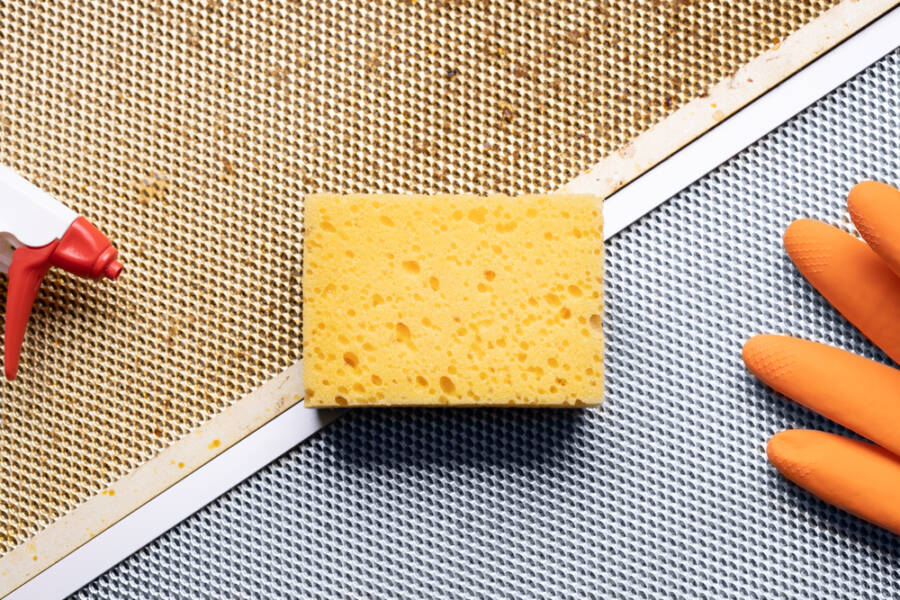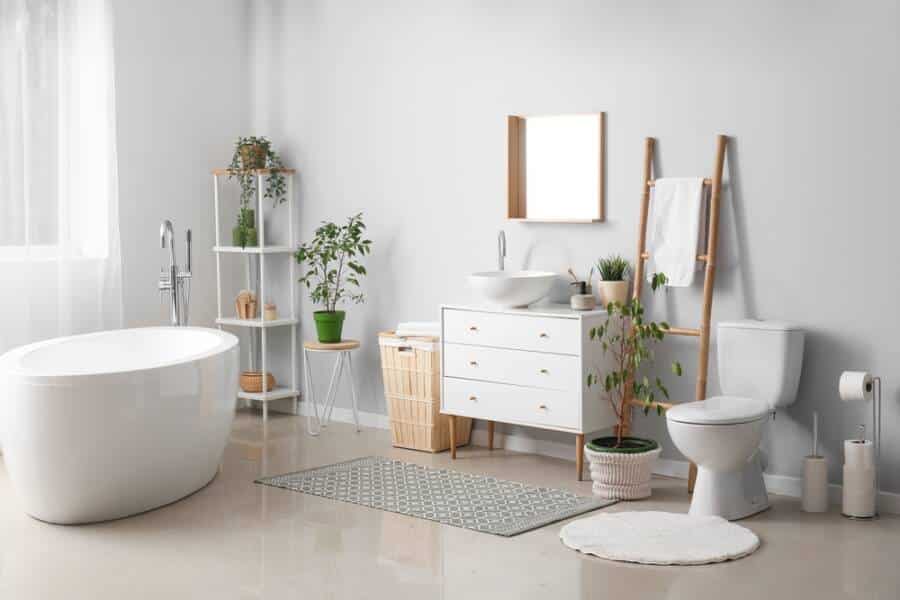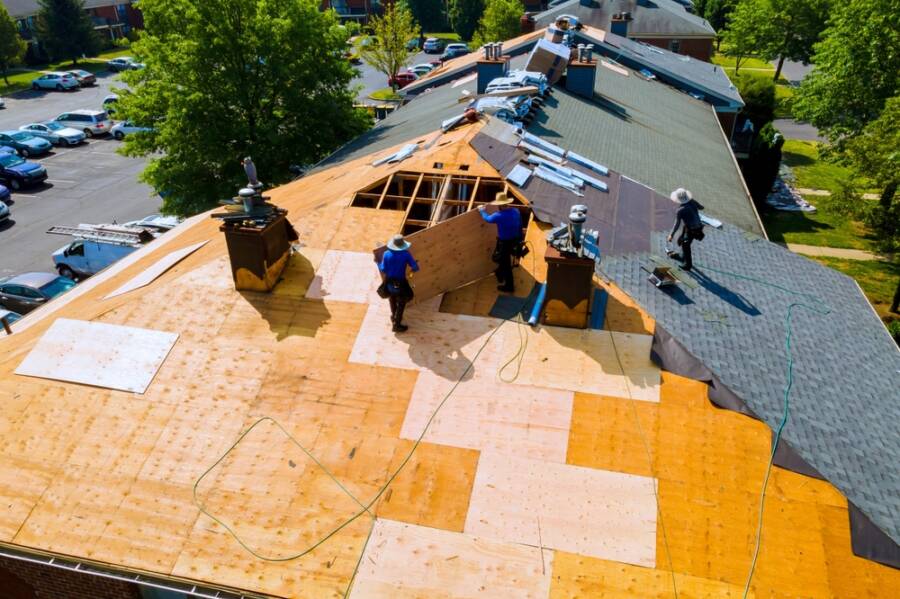Did you know that Philodendron Birkin plants are not only beautiful plants but also make great houseplants? In fact, they are very popular as indoor plants because they require little care and thrive indoors.
But do they really bloom? Well, yes, they do. And here’s how to get them to bloom:
Does Philodendron Birkin flower?
The answer is yes! The plant has been known for its beautiful flowers since 1848, when it was introduced from Brazil. It is now grown around the world as an ornamental house plant. This Philodendron Birkin flower is a gorgeous addition to any indoor or outdoor space.
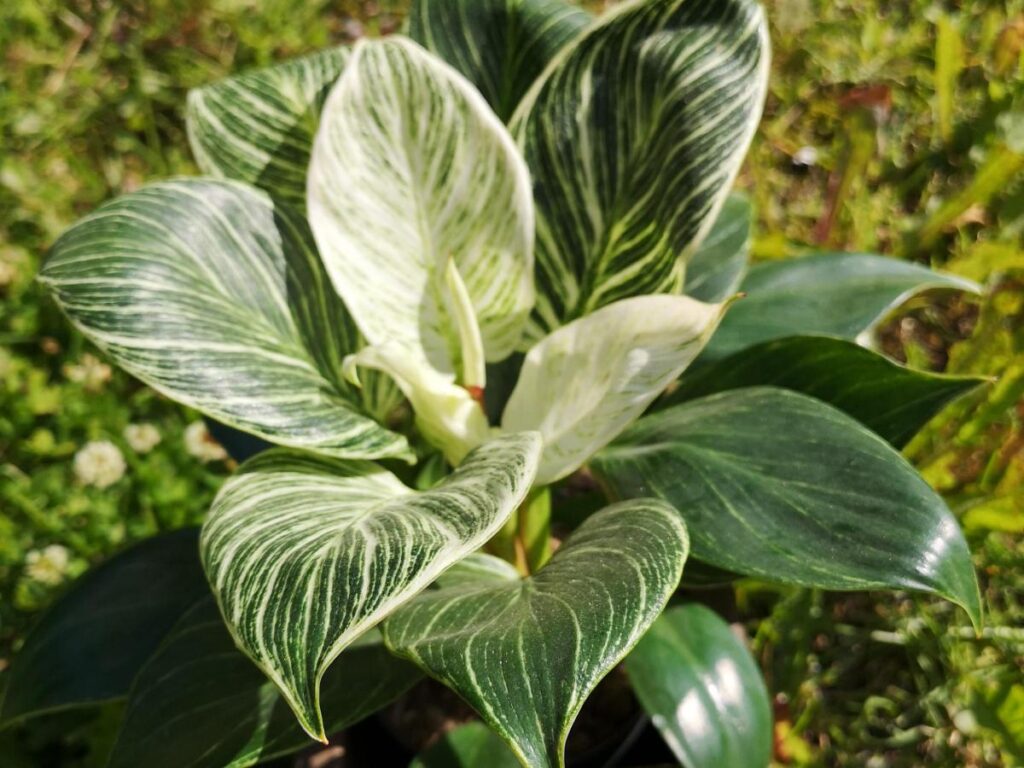
What Does a Philodendron Birkin Flower Look Like?
The Philodendron Birkin flower is a beautiful and unusual hybrid with round, dark green leaves that are striped and spotted with bright white. Its plump, thick, and bright stems make it an eye-catching houseplant that is sure to be a conversation starter.
No two leaves are the same, making it an attractive and unique choice for houseplant enthusiasts.
Sometimes, these flowers are red, orange, yellow, or white, depending on the variety. The color depends on the amount of sunlight the Philodendron Birkin receives.
A Philodendron Birkin flower is technically a flowering plant. However, it doesn’t look anything like a typical flower. Instead, its flowers are more like modified leafy structures called bracts. These bracts surround the plant’s true flowers.
The bracts are usually green in color, but they may vary depending on the variety. Some varieties have yellowish-green bracts, while others have red ones.
You’ll find that most philodendrons have a large number of bracts surrounding the center of the plant. There are usually only two or three true flowers per plant.
When Will Philodendron Birkins Bloom?
Philodendrons flower during the springtime months of March through May. These plants bloom in shades of pink, red, purple, white, yellow, orange, and green. Some varieties may produce flowers year-round, while others only bloom seasonally. Most philodendrons require full sun exposure, although some varieties tolerate partial shade.
Planting is most effective in the spring. In fact, you can even plant them in the winter, although it may take more time.
In cooler regions, you’ll see the Birkin starting to produce flowers during the summer. In these areas, the plant will grow larger leaves rather than smaller ones.
How Often Does a Philodendron Birkin Flower?
The Philodendron Birkin plant takes 3–5 years to fully mature. Sometimes, it may take 5–10 years or longer. Once a Philodendron Birkin begins to flower, it stays in bloom for 10–15 years. And once it flowers, it doesn’t stop until it dies off.
This means that if you buy one Philodendron Birkin plant, you’ll get a full flowering cycle within three to five years. But if you buy two plants, you could end up waiting anywhere from five to ten years before getting a second flowering cycle.
A philodendron is easy to grow. It requires minimal care and little maintenance. In fact, most plants prefer to live in shade. This makes them great choices for indoor plants.
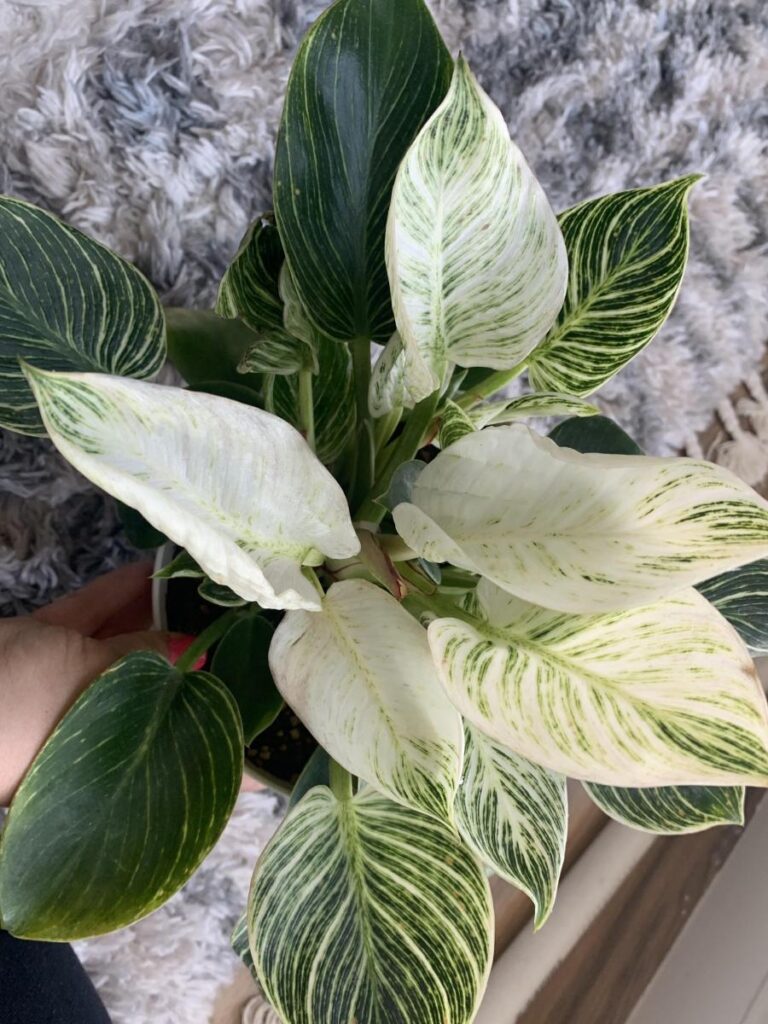
How to Get Philodendron Birkin to Bloom?
The key to making sure your Birkin blooms year after year is to provide it with the proper environment. This means providing it with the right amount of light, water, and fertilizer. Following these steps will give you the best results and get your plant to bloom with its white leaves.
If you fail to meet any of these requirements, your plants won’t bloom.
Light Requirements
The Philodendron Birkin needs an average temperature between 65°F and 75°F during the day and 55°F at night.
Bright indirect light is the best way to grow philodendrons because it gives them enough light without making them too hot. Direct sunlight causes heat buildup, which can lead to wilting and death.
Plants grown in bright indirect light bloom earlier than plants grown in direct sunlight. This is especially true for Philodendron Birkin plants, which prefer warm temperatures and high humidity levels.
To encourage flowering, give your plant plenty of indirect sunlight. You can place your philodendron in a sunny window or position it near a south-facing wall. But if you live in a colder climate, you may need to bring your philodendron inside during the winter months. that
Water Requirements
Watering helps keep plants healthy and their blooms vibrant. But too much water can cause the roots to rot and kill your plant. So how much should you water your philodendron?
That depends on the type of soil you use. Some soils dry out quickly, while others dry out slowly. The amount of water needed varies depending on the type of soil used.
To find out how much water your philodendrons require, measure the depth of the potting mix at the bottom of the container. Then add enough water until the top layer of soil is just moistened. This is usually between 1/2 inch (1 cm) and 2 inches (5 cm).
Once you know how often to water, you can change it based on what the weather is going to be like. If it looks like rain is coming, reduce the amount of water you give your philodendron. And if it looks like there won’t be any rain for several days, increase the amount of water you supply.
Make sure that whatever vessel holds your philodendron has at least one drainage system to release excess water.
Humidity Requirements
You’ll find that the ideal humidity for Philodendron Birkins is between 40-70%. You may not be able to achieve those levels naturally, but there are ways to bring the humidity closer to ideal.
For starters, if all your tropical plants are located in one spot, you might consider setting up a small humidifier among them. Humidifiers work by heating water until it becomes steam. As the steam rises through the room, it creates moisture in the air.
If you live in a dry climate, you might want to invest in a dehumidifier. These devices remove excess moisture from the air.
Regardless of whether you decide to use a humidifier or a dehumidifier, you should still monitor the humidity levels in your house. If you notice that the humidity is dropping, you can adjust the settings accordingly.
Soil Requirements
Philodendron Birkins are among the easiest varieties to grow. These plants prefer soil with a pH between 5.8 and 7.2.
A soil with a slightly acidic range of pH helps keep the roots healthy and prevents them from becoming susceptible to disease. As long as the soil stays moist, you shouldn’t have to water your philodendron regularly.
But if you notice that your philodendron isn’t growing as fast as usual, then you may want to add fertilizer to its soil. Add 1/4 teaspoon of fertilizer per gallon of soil once a month.
A philodendron needs plenty of moisture to thrive. You should never let the soil dry out completely, or else your plant won’t be able to survive.
Fertilizer Requirements
Your philodendron needs a little bit of fertilizer once in a while. You should stop fertilizing during the winter months, though, since your plant isn’t actively growing.
Liquid fertilizer is usually recommended for plants, but you can also give your philodendron a dose of fertilizer every couple weeks. Just dilute the fertilizer with water before applying it.
What Are the Care Tips to Get Philodendron Birkin to Bloom with White Leaves?
These plants grow well indoors and outdoors. You can place them in bright light or dark conditions. Most varieties require low humidity levels, so keep them away from humidifiers and air conditioners. They are very easy to care for. Just water regularly and fertilize once every month or so.
1. Ensure adequate light
Light is important for white leaves to bloom on Philodendron Birkin plants because the leaves vary in color, and those with white stripes need brighter light than completely green leaves. All plants need bright light, but those with thin leaves, like the Philodendron Birkin, especially need it. To get the most out of natural light, adjust a home’s position throughout the year or use artificial or grow lights to help plants grow if there isn’t enough natural sunlight available.
2. Provide adequate water
Water is essential to the blooming process of a plant because it helps the plant absorb water and nutrients that are necessary for blooming. Without water, plants cannot access these necessary resources, resulting in a lack of flowering. Also, for plants to bloom well, they need a substrate mix with lots of water and good drainage. Without this mix, the plants might not be able to get enough water from their surroundings to bloom properly.
3. Use fertilizer according to the plant’s needs
Fertilizing the Philodendron Birkin Flower is important for achieving healthy growth and blooming white leaves. During the growing season, which usually lasts from spring to fall, it’s important to use a fertilizer like Dyna-Gro Grow Quart that has a balanced ratio of nutrients. This complete, urea-free fertilizer contains all the micro- and macronutrients plants need. Fertilizing too often or with a soil that is too high in salt content can damage the plant and negatively affect the blooming of white leaves. For the best results, it is also important to follow the directions on the fertilizer package.
4. Maintain appropriate temperature
Temperature is an important factor to consider when taking care of a plant because it affects how the plant absorbs water and nutrients, as well as its growth rate and health. A Philodendron Birkin plant will stay healthy if the temperature stays between 60 and 85 degrees Fahrenheit. Cold drafts from fireplaces, heating vents, or radiators can cause browning and cold stress in plants. For best health, you should also keep an eye on the humidity level and keep it near 50%.
5. Ensure adequate humidity
Adequate humidity is important for a plant to bloom white leaves because it helps create a humid environment that supports the growth and blossoming of the plant. Without enough humidity, the leaves may become dry and not be able to receive enough moisture to reach their full potential. By increasing humidity in an indoor environment, plants will have better conditions for blooming white leaves. Philodendron Birkin plants can also do better indoors if you mist them or keep them near a humidifier. This will help them perform and look their best when they flower.
6. Use a well-drained potting mix
It is important to use a well-drained potting mix when trying to get the leaves of a Philodendron Birkin to bloom white because it prevents the roots from becoming waterlogged and encourages new growth. The addition of perlite not only helps create better drainage but also ensures that the soil remains aerated and light enough for root growth. This will help make sure the plant can get enough nutrients from its surroundings.
7. Provide proper pruning
Philodendrons need to be pruned well so that they can grow healthy leaves and stems and produce white flowers. Pruning should be done with a pair of sharp, sterile shears and should take place in late spring or early summer when the new growth is beginning to emerge. Dead or damaged leaves should be removed, leggy stems cut back, and overcrowded areas trimmed away. The use of sharp shears or knives can help keep the plant from being damaged while it is being pruned.
8. Monitor growth habit
Monitoring the growth habit of Philodendron Birkin is necessary for the plant to bloom white leaves because it ensures that the plant receives proper care and nutrition. Proper feeding habits, like fertilizing it sparingly in the fall and winter, can keep it from growing slowly and weakly. In the spring and summer, feeding it once a month can give it the energy it needs to grow quickly. This careful observation of its environment ensures that it has the best conditions to bloom white leaves.
How to Care for Philodendron Birkin’s Flowers During Different Seasons?
The Philodendron Birkin flower is a popular houseplant that is easy to grow and maintain. This plant is often used as a decorative accent in homes because of its beautiful foliage and bright colors. But while many people enjoy having this plant around, some do not know how to take proper care of it. Here are some tips for keeping this plant healthy throughout the year:
In the Spring
When you bring home your Philodendron Birkin flowers, make sure to give them plenty of sunlight. They like to receive six hours of light each day, but they don’t like too much sun.
If you live in a place where temperatures fluctuate greatly, try placing the plant outside during the warmer days and bringing it inside at night. You can also use a timer to ensure that the lights turn off automatically.
During the Summer
If you live somewhere where summers are hot and humid, you’ll want to water your plants once a week during the summer months. Watering your plants in the morning is best, since they tend to absorb moisture better in cooler weather.
Also, don’t water your plants when it rains, because rainwater has minerals that could hurt your plants.
In the Fall
As the temperature drops, your Philodendron Birkin flowers will start to wilt. To help your plant recover, you’ll want to slowly increase the amount of light it receives. Gradually move the plant closer to a window, and pay attention to how long it takes for the leaves to begin turning yellow again. Once the leaves begin to change color, you can add another layer of protection by covering the pot with plastic wrap.
In the Winter
Your Philodendron Birke flowers won’t require as much maintenance during the colder months. Just remember to keep them out of direct sunlight and check on them occasionally to make sure they aren’t getting too cold.
Additionally, mulch and water the plant often in its early stages of growth, as well as spray it frequently with water. Keeping an eye on its moisture levels is also key for optimal flowering; too much or too little moisture can cause detrimental effects on this beautiful tropical plant.
Should I Cut the Flowers off my Philodendron Birkin Plant?
It is recommended to cut the flowers off of a Philodendron Birkin for a few reasons. First, pruning the flowers will help promote new growth and keep the plant healthy. Second, it can help control the size of the plant. Third, removing spent blooms prevents any more from forming and can prevent diseases from spreading. Lastly, pruning helps your Philodendron Birkin grow new white leaves, which makes it look better.
Conclusion
With the proper care, your Philodendron Birkin can produce stunning white leaves. Be sure to follow the tips and instructions in this guide so you can achieve success. In no time, you’ll be able to enjoy beautiful blooms that will make your home look even more amazing.
Source:
Philodendron Birkin Flower (White Wave) Care Guide
9 Best Philodendron Birkin Care Secrets



